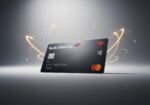Anúncios
In today’s digital world, securing your bank card is more important than ever. With cyber threats evolving, protecting your payments keeps your finances safe and your mind at ease. This guide will walk you through key strategies to shield your bank card from fraud and misuse.
Understanding Common Threats to Bank Card Security
Understanding common threats to bank card security is key to protecting your money. One of the biggest risks Canadians face is phishing scams. Fraudsters send fake emails or texts that look like they come from your bank, asking for your card details or passwords. These messages often create a sense of urgency, tricking you into clicking malicious links or giving away sensitive information.
Anúncios
Another widespread danger is the use of skimming devices. Criminals attach these small electronic gadgets to ATMs, gas pumps, or point-of-sale terminals. When you swipe your bank card, the device copies your card’s magnetic strip data silently. This stolen information is then used to clone your card or make unauthorized purchases. For example, some Canadians have reported ATM withdrawals they never made after using compromised machines.
Online fraud also poses a serious threat. Cybercriminals exploit vulnerabilities in e-commerce websites or intercept data during online transactions. They may use malware or fake sites to capture your card details without you knowing. Shopping on unsecured websites or public Wi-Fi networks increases this risk.
Aware of these threats, it becomes clear why understanding the tactics criminals use is so important. Knowing the risks helps you spot scams, avoid unsafe machines, and protect your online transactions. Staying vigilant minimizes chances of falling victim, keeping your bank card and finances safe from harm.
Setting Up Strong Authentication Methods for Your Bank Card
Bank card security starts with strong authentication methods. The most common and essential way to protect your bank card is with a Personal Identification Number (PIN). A good PIN is not just any number—it should be unique and hard to guess. Avoid simple combinations like “1234” or birthdays. Instead, choose a random sequence that only you know. Remember to change your PIN regularly, especially if you suspect it might be compromised.
Two-factor authentication (2FA) adds an extra layer of security beyond the PIN. Many banks now offer 2FA, requiring a second verification step—often a code sent via SMS or generated by an app—before allowing access to your account or authorizing payments. This makes it much harder for thieves to use your card, even if they’ve stolen your PIN or card number.
Biometric verification, such as fingerprint or facial recognition, is becoming more widely available. This method uses unique physical traits to confirm your identity. It is very difficult to fake, making it a strong safeguard. Many banks integrate biometric authentication into their mobile apps, so enabling this feature can greatly improve your card’s protection.
To set these features up, start by visiting your bank’s online portal or mobile app. Follow prompts to create or update your PIN, enable 2FA under security settings, and activate biometric login if your device supports it. Always keep your authentication methods private and never share your codes or biometric data.
Strong authentication isn’t a one-time step. Update your PIN every few months and review your security settings regularly. This ongoing attention helps prevent unauthorized access and keeps your finances safe.
Safe Practices When Using Your Bank Card Online
Safe Practices When Using Your Bank Card Online
When shopping online with your bank card, always choose reputable websites that use secure connections. Look for “https://” in the URL and a padlock icon near the address bar, which indicate encrypted communication. If a website lacks these signs, avoid entering your card details to reduce the risk of data interception.
Phishing emails are a common tactic scammers use to steal your bank card information. Be cautious with emails asking for personal or financial details, especially if they create a sense of urgency. Never click on links or download attachments from suspicious messages. Instead, go directly to your bank’s official website or contact them to verify any unusual requests.
Avoid using public Wi-Fi networks for online payments. These networks are often unsecured, making it easier for hackers to intercept your data. If you must make a transaction on the go, use a trusted mobile network or a reliable virtual private network (VPN) for added protection.
Watch out for common scam signs such as unusually low prices, requests for extra fees, or sellers asking for payment outside of secure platforms. If you suspect fraud or notice unauthorized charges, report the issue immediately to your bank. Canadian consumer protection laws require banks to investigate and often refund fraudulent transactions if reported promptly.
Regularly monitor your bank card statements for any unfamiliar activity. Quick action can prevent further loss and help keep your payments secure.
Protecting Your Bank Card in Physical Transactions
When using your bank card in person, vigilance is key to keeping your money safe. Always shield the keypad with your hand or body when entering your PIN at ATMs, payment terminals in stores, or restaurants. This simple act helps prevent onlookers or hidden cameras from capturing your PIN, a critical step attackers rely on to access your funds.
Before inserting or swiping your card, take a moment to examine the card reader. Look for anything unusual like loose parts, added devices, or signs of tampering. Fraudsters often install skimming devices that steal card data during regular transactions. If a reader looks suspicious, avoid using it and find an alternative terminal or location.
Choose where and how you use your bank card carefully. Avoid sketchy or poorly lit ATMs, especially those not attached to banks. At stores and restaurants, try to keep the card in sight whenever it’s out of your hand to prevent cloning or theft. When possible, use contactless payments to reduce physical interaction with the machine.
If your bank card is lost or stolen, act immediately. Contact your bank or card issuer to report the issue and request card cancellation. In Canada, you can reach out to your financial institution’s fraud department directly or call the Canadian Anti-Fraud Centre for guidance. Prompt notification helps block unauthorized transactions and limits your liability.
Keeping these habits strong protects your bank card during physical transactions and maintains control over your financial security.
Monitoring and Managing Your Bank Card Activity Regularly
Monitoring your bank card activity regularly is a key step in protecting your finances. Developing the habit of checking your transactions often helps catch unauthorized charges before they cause major damage. Make it a routine to review your monthly statements carefully. Look for purchases or withdrawals that seem unfamiliar or out of the ordinary.
Most Canadian banks offer online banking apps where you can easily access your transaction history anytime. These apps usually allow you to set up transaction alerts. By enabling notifications for every purchase or withdrawal, you’ll receive instant updates via text or email. This real-time monitoring can alert you to suspicious activity immediately, even before your statement arrives.
Early detection of fraud is your best defense. The quicker you spot a problem, the faster you can act to limit losses. If you see any unauthorized transactions, contact your bank right away. Canadian banks typically have dedicated fraud departments ready to assist you. Reporting fraud promptly can help freeze your card, reverse charges, and prevent further unauthorized use.
In addition to bank services, tools like Equifax and TransUnion credit monitoring can alert you to unusual credit activity related to your card. These services are valuable for catching identity theft early. Many Canadian banks also provide fraud prevention advice and secure messaging options through their websites and apps, making monitoring smoother and safer.
Stay proactive with your bank card management. Regular reviews, quick responses, and the right alerts turn you from a passive user into an active guardian of your financial security.
Taking Advantage of Bank and Government Security Resources
Canadian banks provide robust security measures to protect bank card users from fraud. Most banks offer zero-liability policies, which mean you are not responsible for unauthorized transactions if you report the issue promptly. This protection is critical, so understand your bank’s specific fraud policies and keep their contact information handy.
Beyond fraud protection, your deposits are insured through the Canada Deposit Insurance Corporation (CDIC). This government agency covers eligible deposits up to $100,000 per insured category, giving you peace of mind that your money is safe, even if a bank faces financial trouble.
Many financial institutions also provide access to credit monitoring services either free or for a small fee. These services alert you to changes in your credit report, such as new accounts or inquiries. By enrolling, you can detect identity theft early and take swift action before serious damage occurs.
If you suspect fraud or identity theft, immediately notify your bank and the major credit bureaus—Equifax and TransUnion. Filing a police report and contacting the Canadian Anti-Fraud Centre can add extra layers of protection and assist law enforcement.
Staying informed is key. Regularly review security updates shared by your bank and government agencies. Subscribe to alerts and follow trusted sources to remain aware of new threats and best practices. Taking advantage of these resources empowers you to keep your bank card and financial identity secure.
Securing Your Bank Card Is in Your Hands
Protecting your bank card requires awareness, good habits, and using available security tools wisely. By understanding threats and adopting safe practices, you empower yourself to keep your finances secure.
Remember, vigilance is your best defense against fraud and misuse. Regularly monitor your accounts and don’t hesitate to use authentication features and reporting resources offered by your bank.
If you found this guide helpful, please share it with others and leave your comments below. Your experiences and tips can help build a safer financial community for all Canadians.




